An astonishing analysis of ‘Kirikou and the Sorceress’: exploring the complex story of Karaba the Sorceress
Introduction to the World of ‘Kirikou and the Sorceress’
African folktales are like hidden treasures, filled with important lessons and wisdom. They are timeless, meaning they can be enjoyed by everyone, regardless of age or era. “Kirikou and the Sorceress1,” an animated film inspired by a West African folktale, is a perfect example of this richness.
This film, created by Michel Ocelot in 1998, tells the extraordinary story of Kirikou, a very clever little boy who saves his village from the sorceress Karaba. Karaba is known for her wickedness and her power to turn men into fetishes. Most viewers see this as a captivating story of courage and adventure. However, some, like journalist Gilles Ciment2 and psychologist Véronique Cormon3, perceive something deeper: a story that could symbolize serious issues such as rape and the abuse of women.
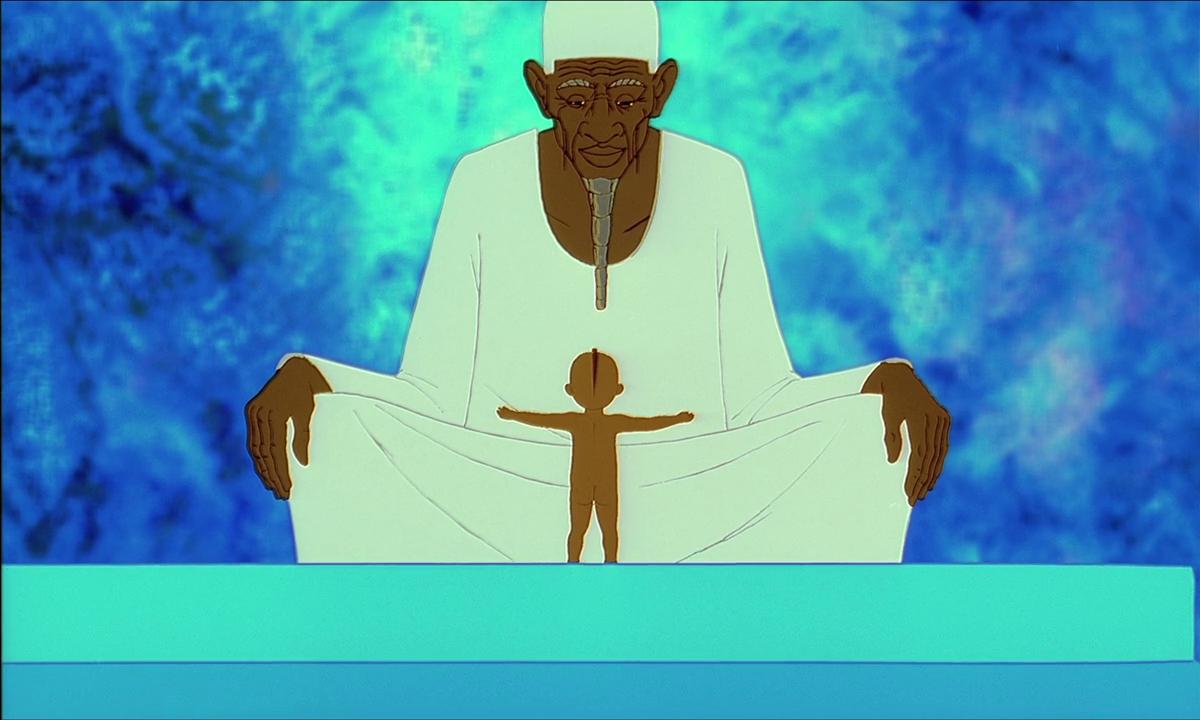
This idea may seem surprising at first, but it makes sense when we think about it. Remember the response of Kirikou’s wise grandfather when he asks, “Why is Karaba the sorceress so wicked?” He speaks of a thorn, driven into Karaba’s back by men, causing unbearable pain and completely changing her behavior. Could this thorn represent something more than meets the eye?
Before diving into the analysis of this complex character, it is important to note that ‘Karaba,’ in Bambara, means ‘to force someone,‘ ‘to oblige,’ ‘to constrain.’ This definition sheds light on certain aspects of the sorceress’s character and her interactions with other characters.
Karaba the Sorceress: a metaphor of pain and resilience
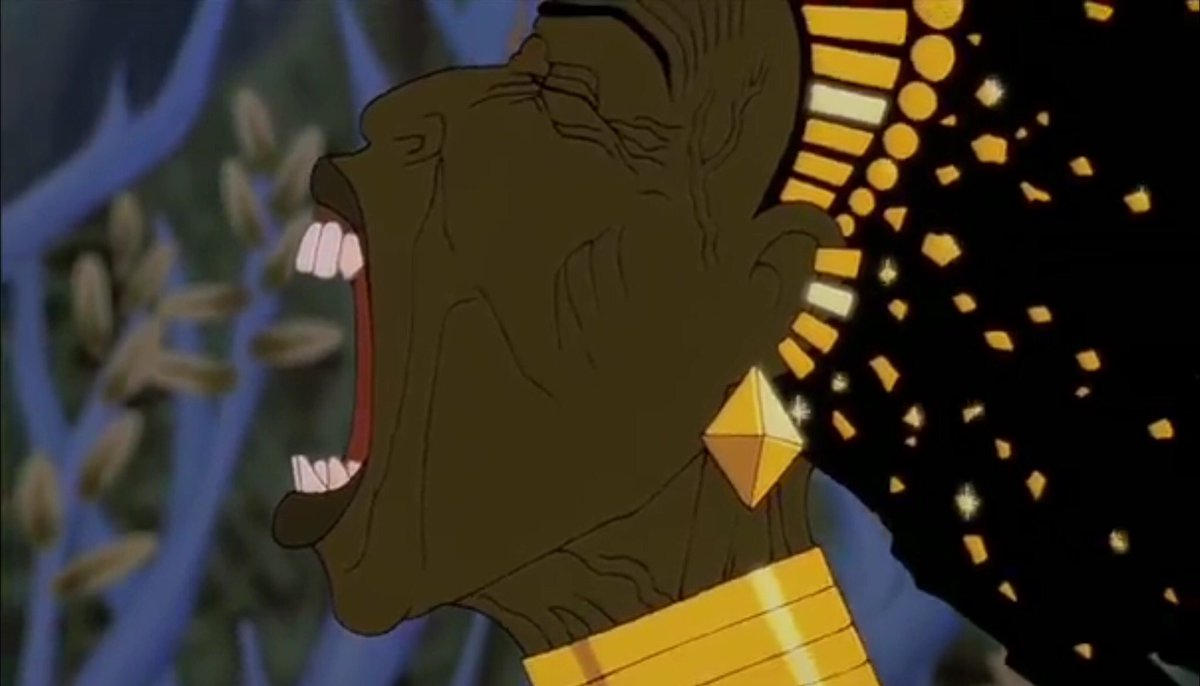
According to Véronique Cormon, an expert psychotherapist, Karaba the sorceress is not just a witch in a tale, but she represents much more. Karaba is described as a deeply wounded woman who has suffered a grave trauma:
“Karaba is a wounded woman, a victim of trauma in the etymological sense, a victim of a breach in her skin, a tear in her bodily envelope.” Véronique Cormon, “Rape and Metamorphosis” published in the International Journal of Victimology, (Vol. 1, No. 1 – October 2002)
Imagine a person who has been so deeply hurt that it changes them completely. It’s like someone having a huge splinter that causes them constant pain.
Véronique Cormon compares Karaba to the many victims of rape. She explains that, just like in real life, Karaba the sorceress blames all men for what happened to her. She can no longer see them in the same way as before. It’s as if, after being hurt, she can no longer trust anyone.
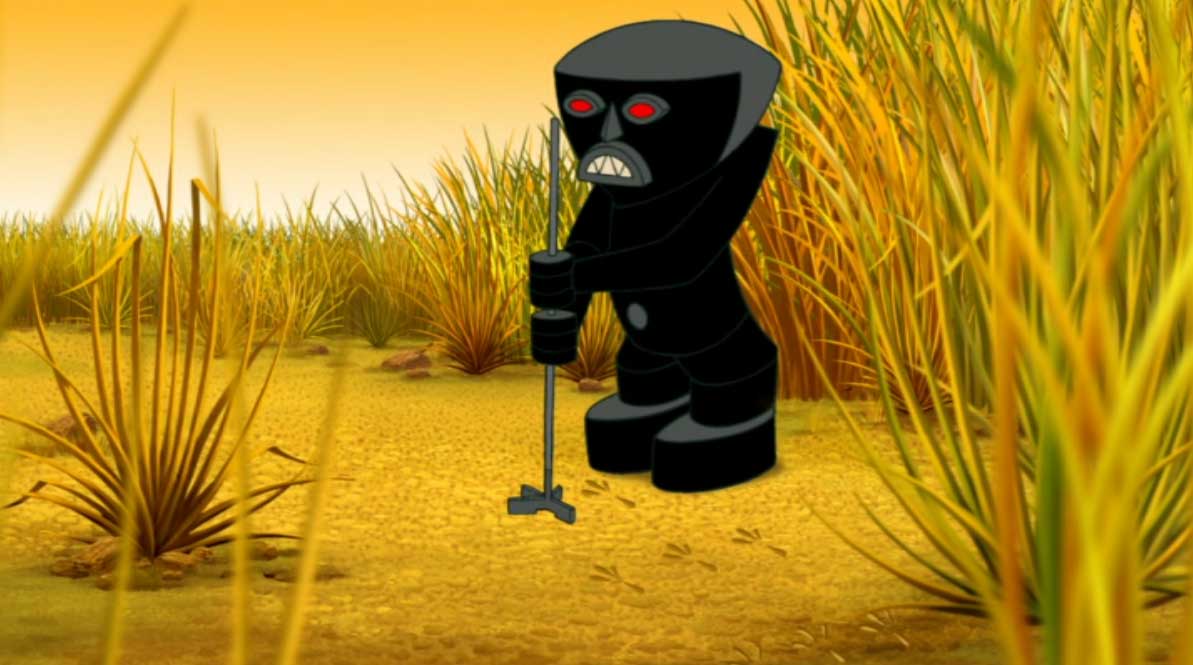
Karaba never speaks about her past. For victims of rape, talking about what they’ve been through can be extremely painful. It’s as if talking about it makes the pain resurface all over again. Karaba the sorceress has also built a barrier around herself, rejecting joy and love, which is often the case for those who have been deeply hurt.
The psychotherapist also notes that by becoming evil, Karaba has adopted some traits of those who hurt her. This is a complex defense mechanism where the victim may start to resemble the aggressor. It’s as if, in trying to protect herself, she becomes what she fears most.
Finally, Karaba the sorceress surrounds herself with men transformed into fetishes, whom she can control. This could symbolize the need to regain control after being powerless in a traumatic situation.
Delving deeper into this metaphor, Michel Ocelot, the film’s creator, explains on his website:
“The poisoned thorn in Karaba’s back is a symbol, representing the harm men do to women, and a suffering that doesn’t go away.”
This interpretation reinforces the idea that Karaba embodies not only a victim of male cruelty but also a figure of enduring pain.
Kirikou and transformation: a symbol of healing and understanding
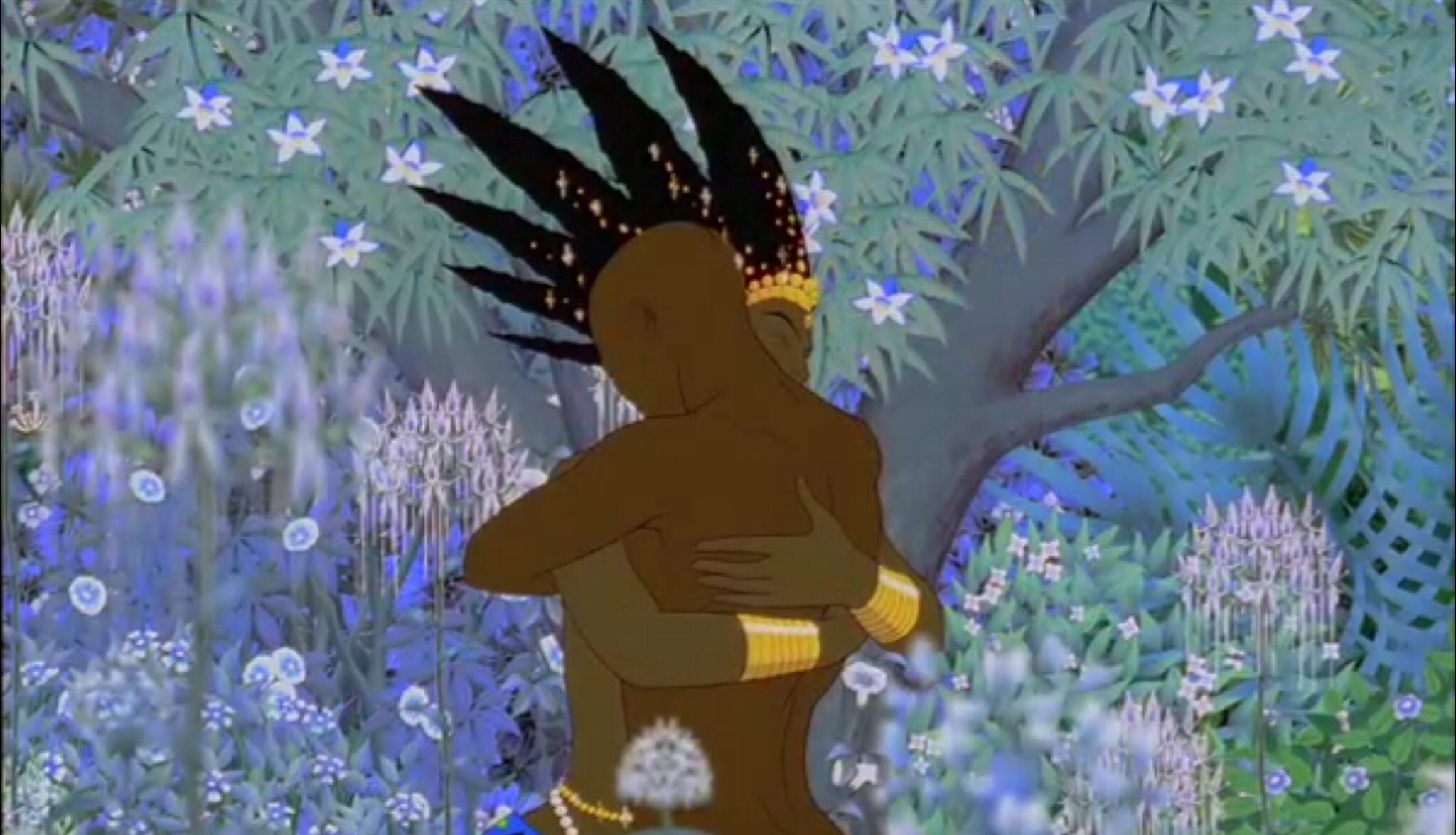
Gilles Ciment, an expert in storytelling, offers a unique perspective on Karaba’s story in “Kirikou and the Sorceress.” He suggests that Karaba’s story could be interpreted as a symbol of collective rape, a tragic and traumatic event. This is a serious and profound idea that makes us view the film from a completely different angle:
“The narrative of this adventure allows adults to interpret her assault as a particularly traumatic collective rape. It’s after Kirikou removes the thorn from the sorceress’s back that he suddenly grows to reach the age of uniting with Karaba – the child becomes a man and gains his virility by redeeming the harm that other men have done with theirs.” Review of Kirikou and the Sorceress by Gilles Ciment, published in Positif, No. 455, January 1999
According to Ciment, the moment when Kirikou removes the thorn from Karaba’s back is crucial. This is when Kirikou, the young hero of the film, suddenly grows and becomes a man. It’s as if, by helping Karaba, Kirikou matures and understands the world around him better. He not only saves Karaba from her physical pain but also helps her heal from her internal wounds.
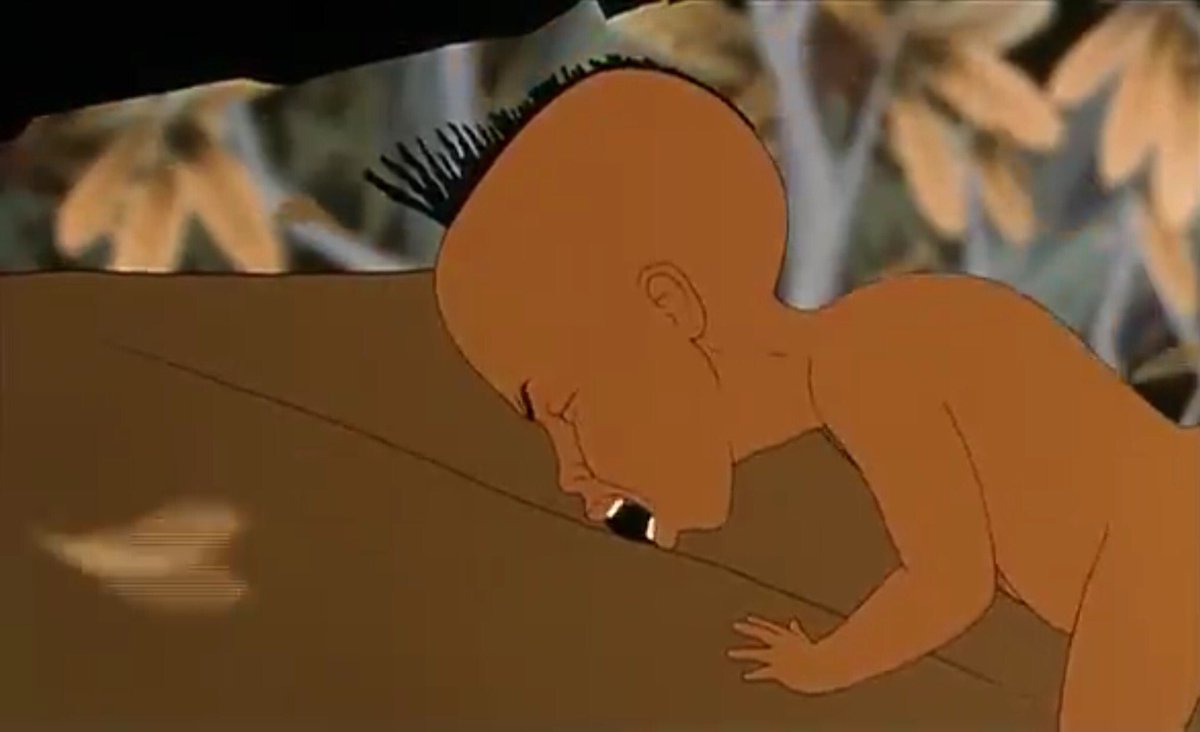
This part of the story shows the importance of understanding the reasons behind others’ actions, especially when they have been hurt. Kirikou seeks to understand why Karaba is so wicked, and it’s by discovering her suffering that he can help her heal. It’s a powerful message about empathy and healing.
The article also highlights the importance of raising awareness about the suffering of rape victims, an issue that remains tragically prevalent in the world, particularly in Africa with wartime rapes. Denis Mukwege4, known as “the man who repairs women,” reminds us that behind every victim is a person with a story and a family:
“Every raped woman, I identify with my wife; every raped mother with my mother, and every raped child with my children.” “Denis Mukwege, Sakharov Prize Laureate: ‘The bodies of women have become a true battleground’”,November 26, 2014.
Understanding and healing through folktales
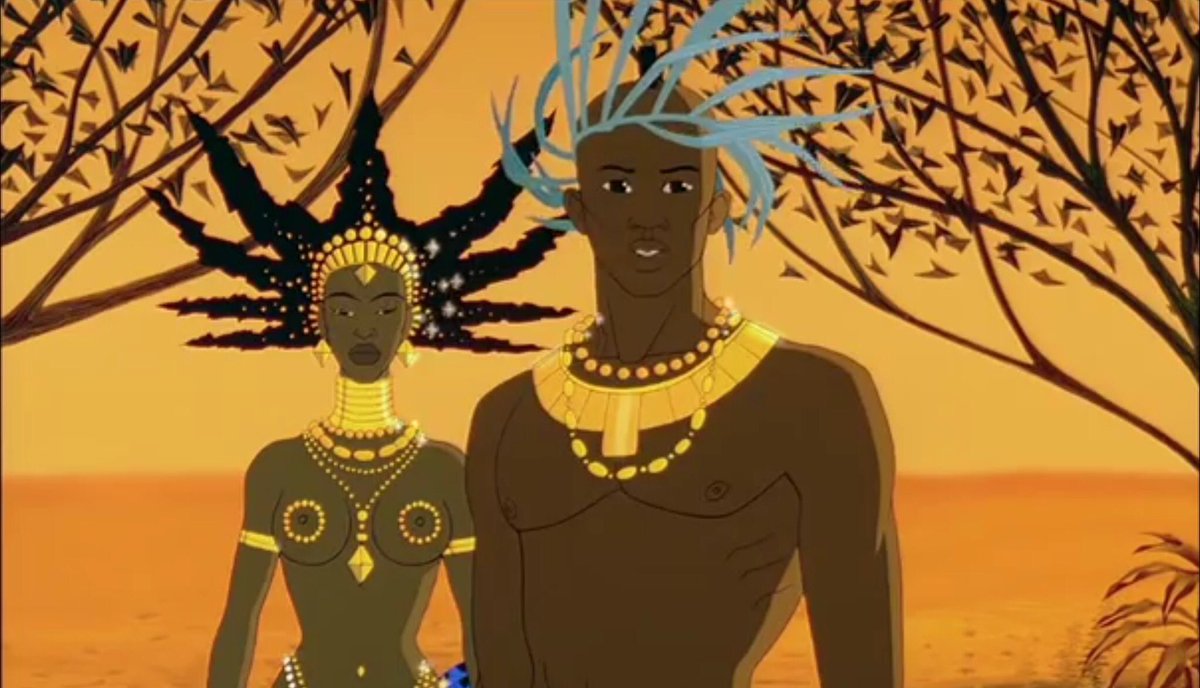
By exploring the various interpretations of “Kirikou and the Sorceress,” we discover how a simple tale can open up discussions on deep and sensitive topics. Karaba’s story, as seen through the eyes of experts like Véronique Cormon and Gilles Ciment, reveals that behind a folktale character sometimes lies a powerful metaphor for pain, trauma, but also healing.
This film, much more than just a children’s story, invites us to look beyond appearances, to seek to understand the reasons behind others’ actions, especially when they have been hurt. Kirikou, through his courage and desire to understand, teaches us the importance of empathy and support in helping others heal.
We hope this article will raise our readers’ awareness of difficult realities such as the violence suffered by women and encourage everyone to adopt a more understanding and compassionate attitude toward trauma victims.
In the end, “Kirikou and the Sorceress” shows us that folktales, though fictional, can be powerful tools for understanding the real world and for helping us build a more empathetic and healed future.
YOU MAY ALSO LIKE
Sommaire
Notes and references
- Kirikou and the Sorceress: French-Belgian-Luxembourg animated film directed by Michel Ocelot, released in 1998. Based on a traditional West African tale, the film tells the story of Kirikou, a heroic child who saves his village from the witch Karaba. ↩︎
- Gilles Ciment: Journalist and film critic, specializing in the analysis of animated films and their cultural and social impact. ↩︎
- Véronique Cormon: French psychologist and psychotherapist, known for her work on psychological trauma and its representation in the media and popular culture. ↩︎
- Denis Mukwege: Congolese doctor, winner of the 2018 Nobel Peace Prize, nicknamed “the man who fixes women” for his work with victims of sexual violence in the Democratic Republic of Congo. ↩︎
